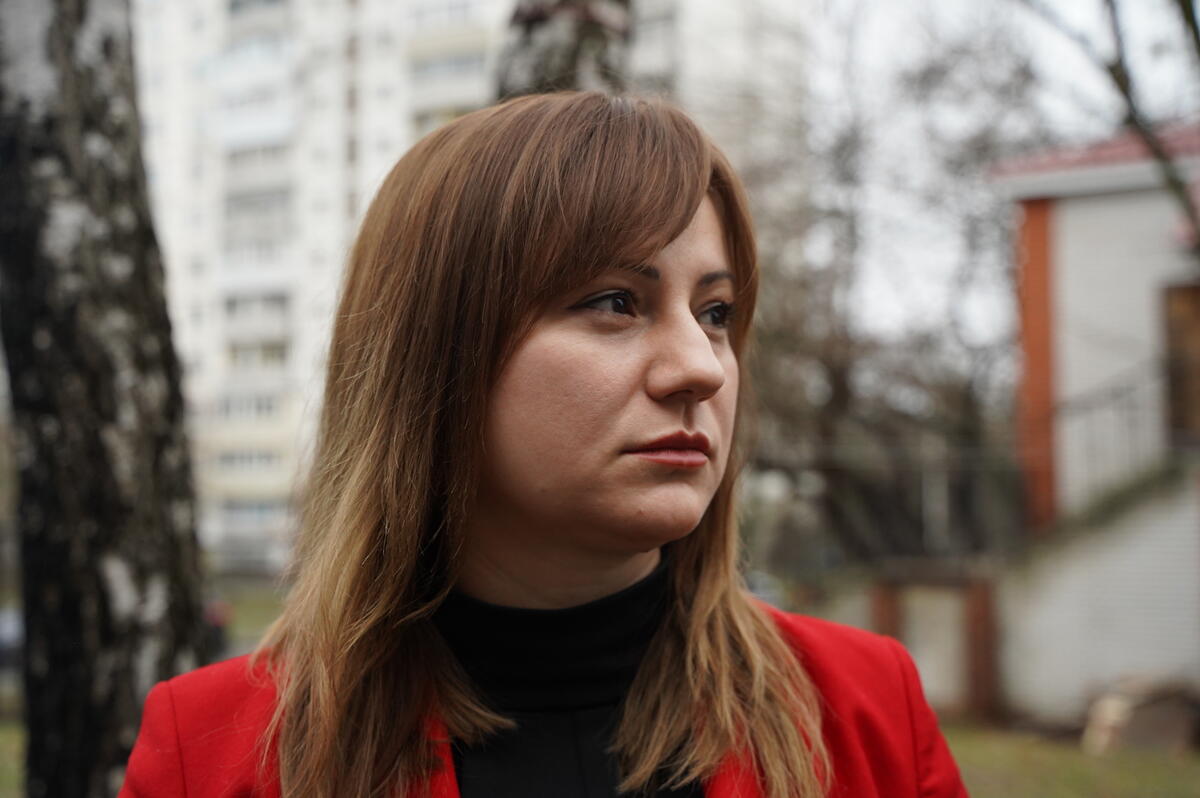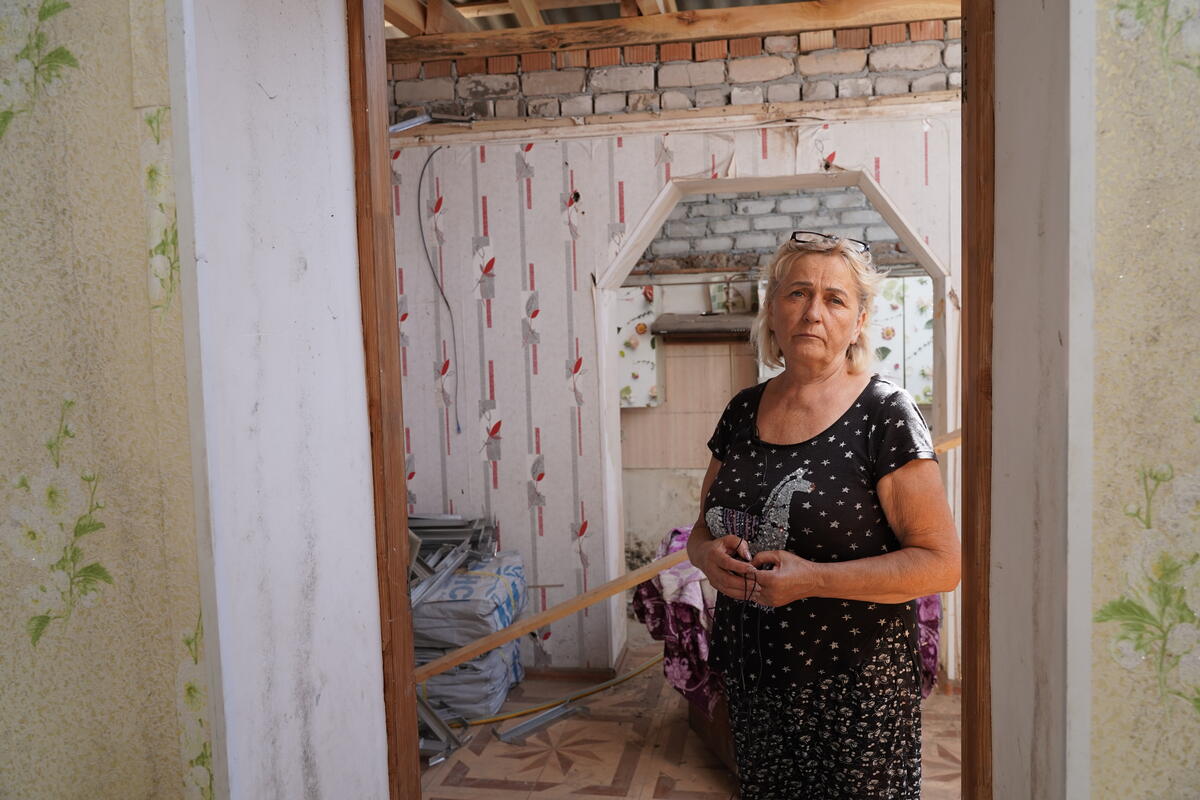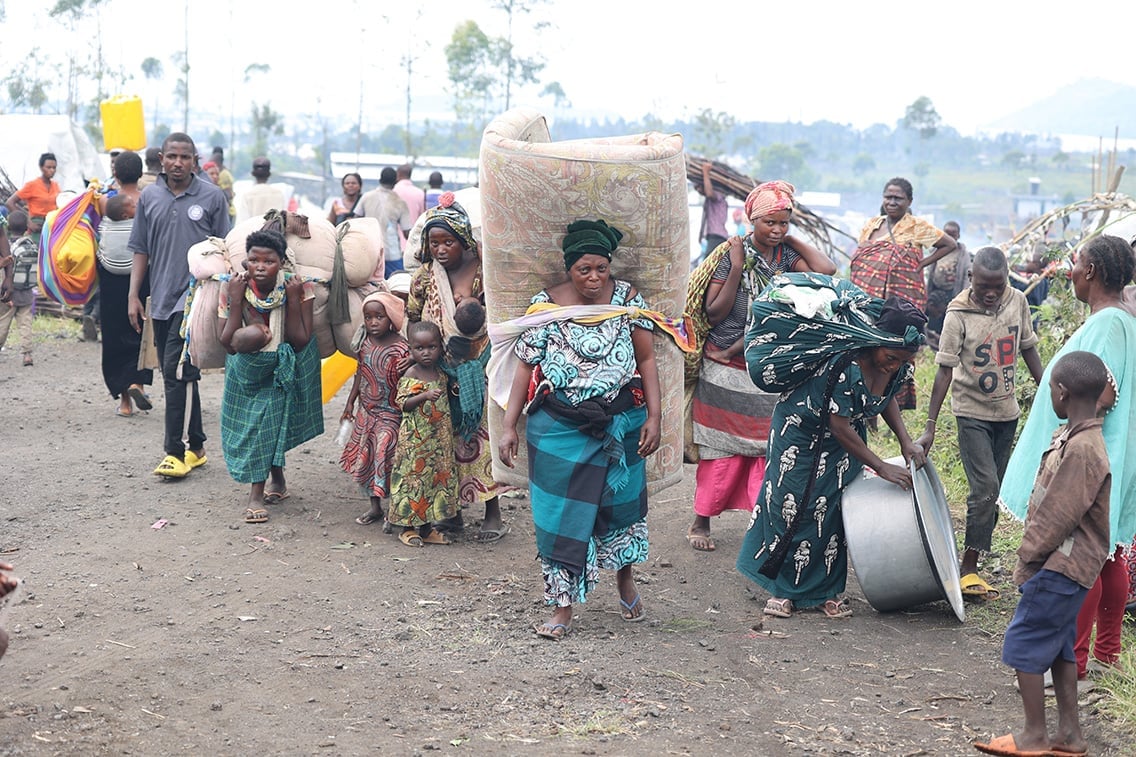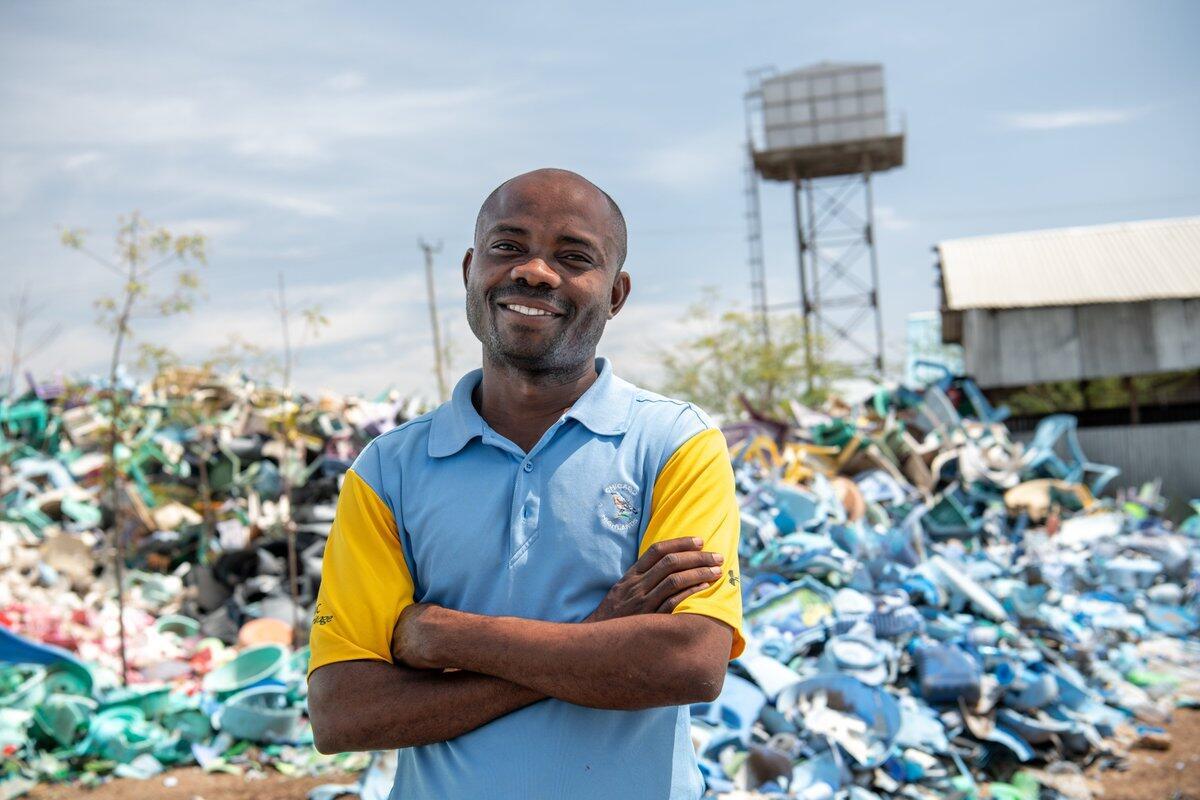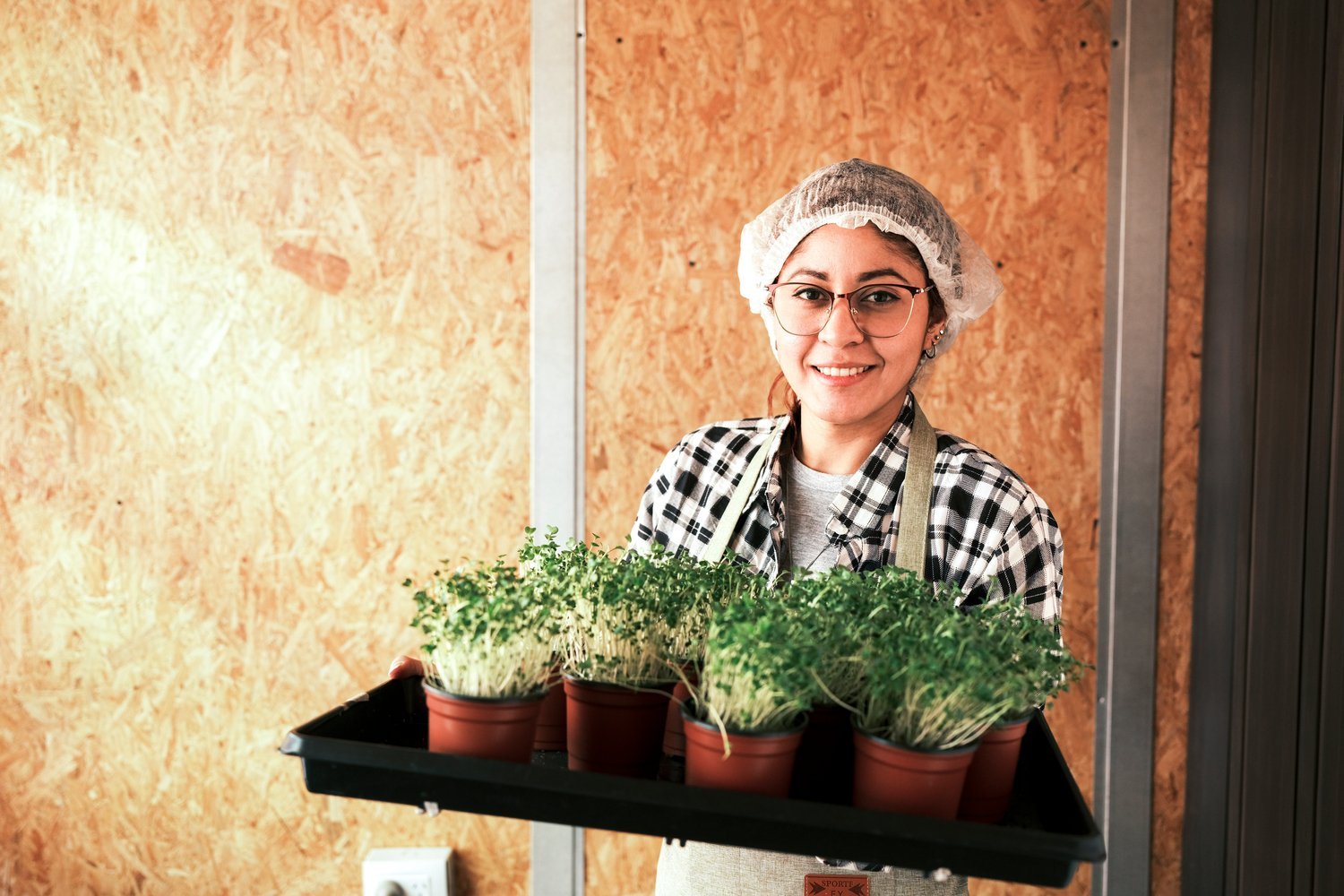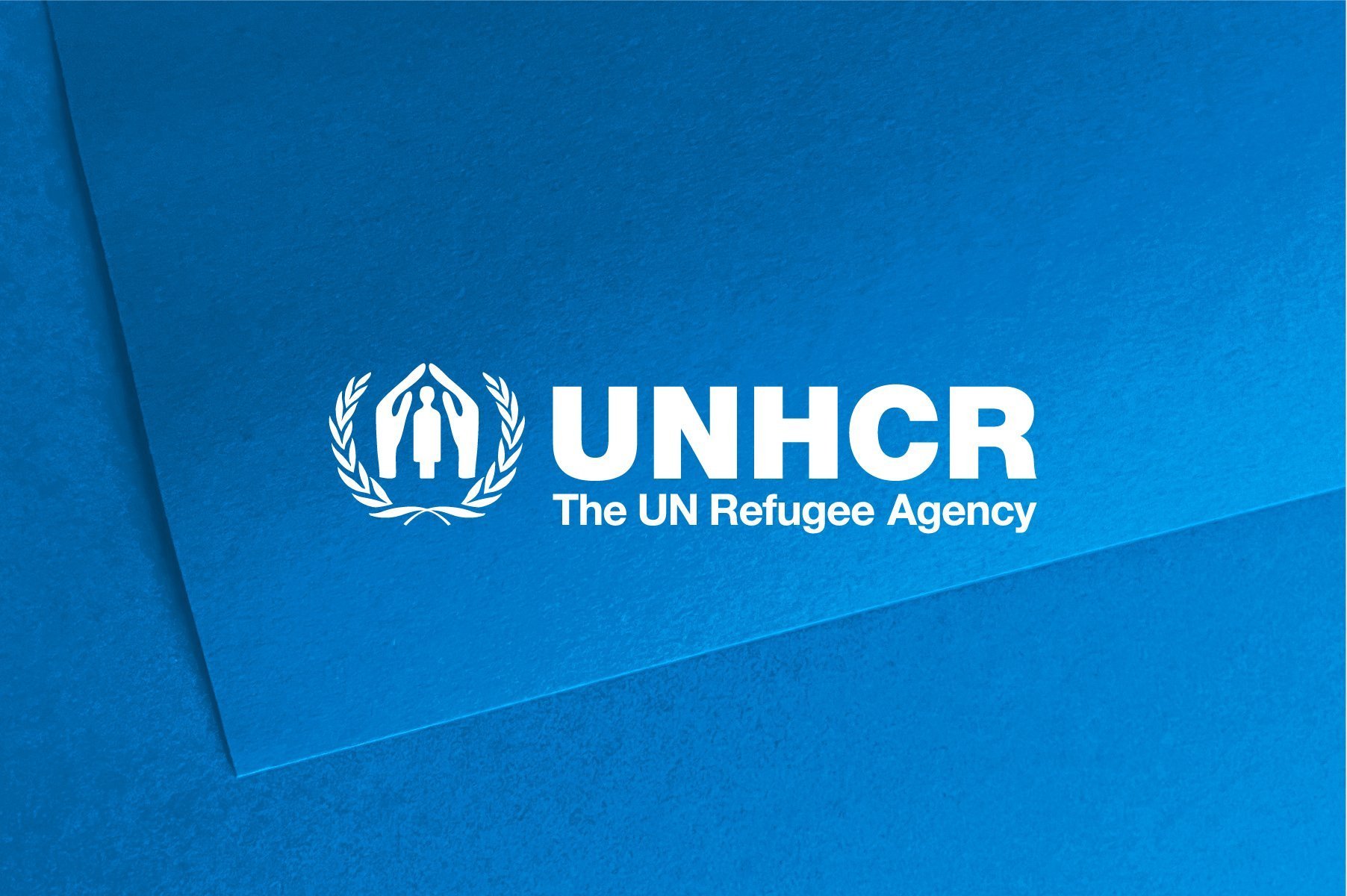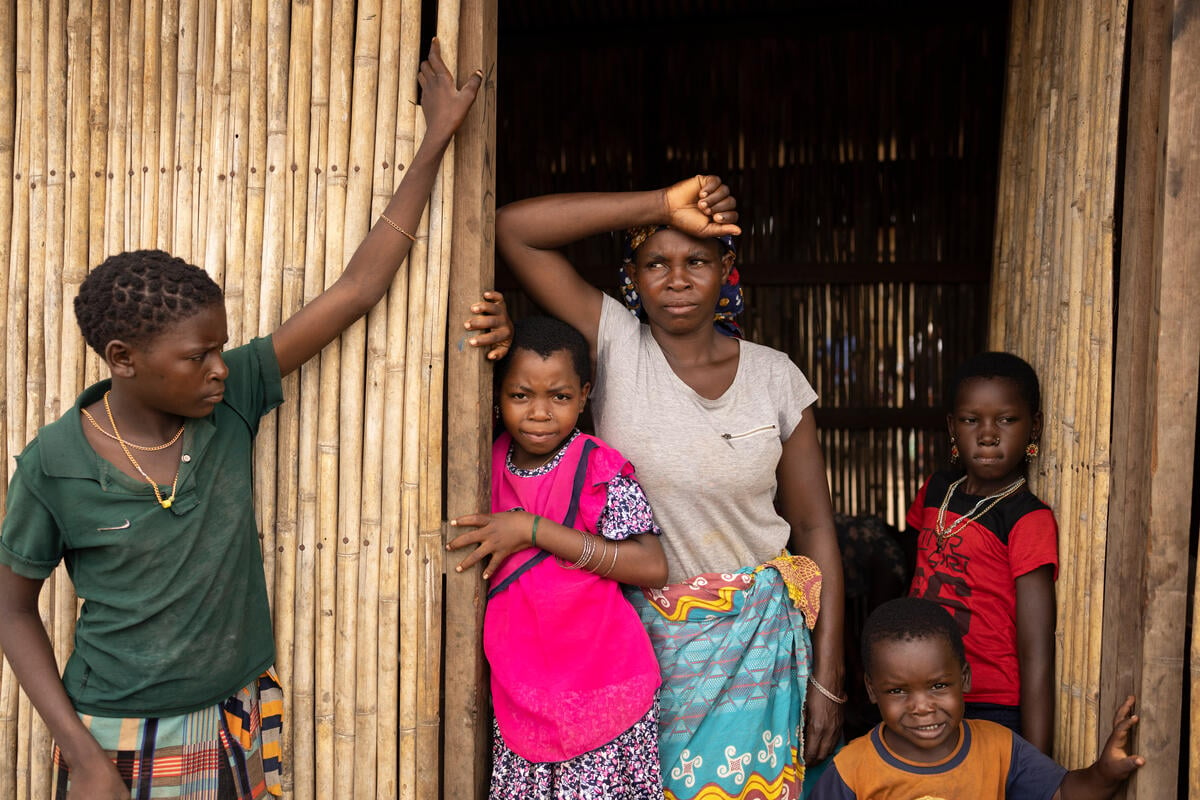South Sudan’s hostages of the climate emergency
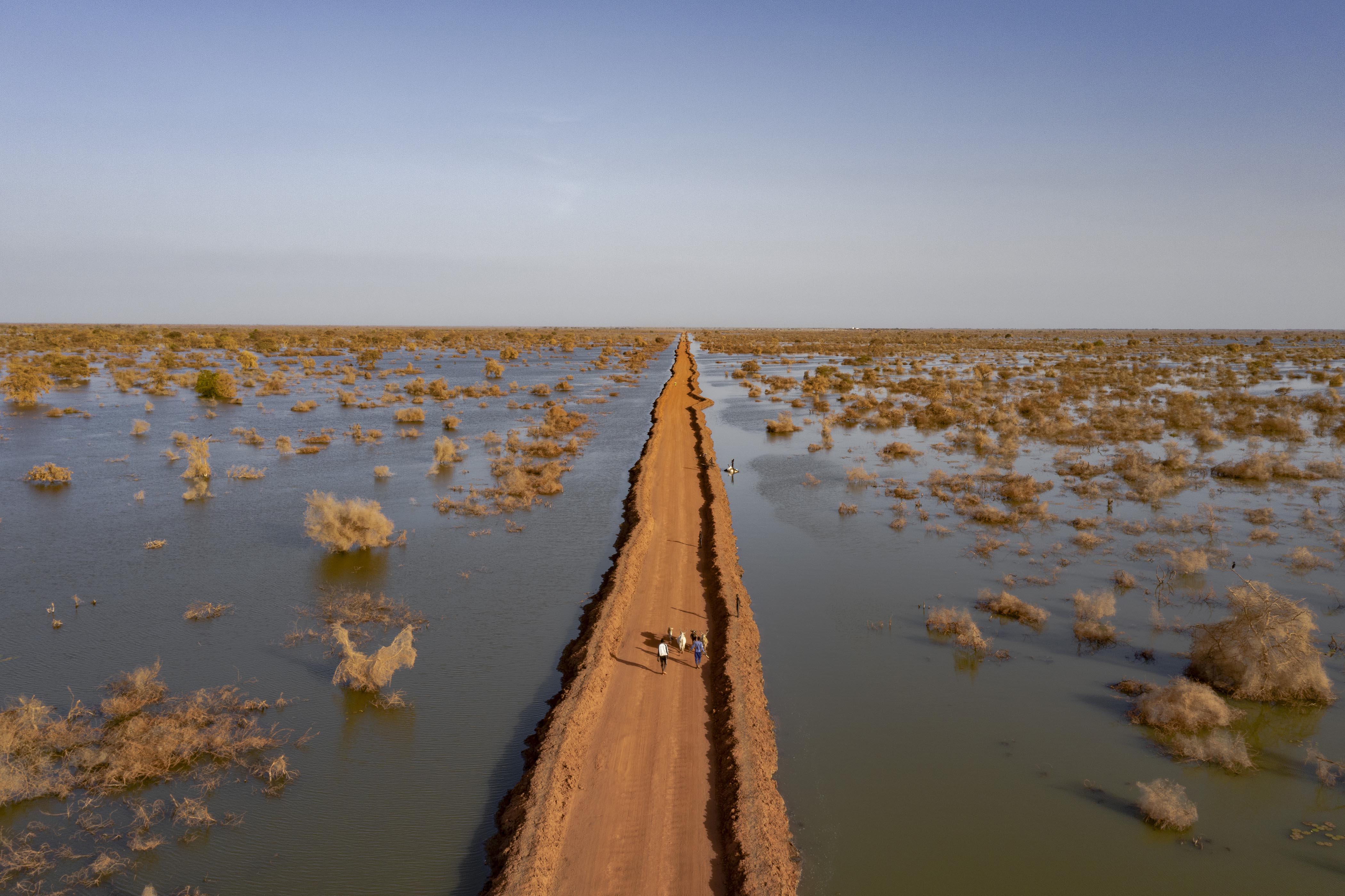
South Sudan’s hostages of the climate emergency
People walk along a road protected by dikes through flood waters near Benitu, South Sudan.
The area they are paddling through used to be dry land. The tops of trees still stick out from the waters. Old steel structures, electrical poles, and the remnants of tukuls [round mud huts] stand as shrines to drier times.

Nyeritea Kay Nakney and her four children and two nephews arrive in Bentiu after being forced to flee their flooded village.
Three hours after setting off from their flooded village, they slowly approach a large earth barrier, a dike, that is keeping the flood waters at bay for now from a site for internally displaced people (IDPs) in the northern city of Bentiu, in South Sudan’s Unity State.

A UNHCR staff member helps Nyeritea Kay Nakney and her family out of their canoe and onto dry land at the IDP site in Bentiu.
Four years of historic rains in this region of South Sudan have submerged farmlands, ancestral homes and roads, turning Bentiu into an island. Some 360,000 people have fled here due to the floods. They now live in IDP sites below the waterline, hemmed in by dikes.

Dikes protect the main IDP (internally displaced persons) camp in Bentiu.
While the mainstream debate surrounding climate change centres on the world becoming uninhabitable in the future, this is already a reality for people stuck here.
Fifty-seven-year-old Nyepini Gator is one of them. She stands among a group of drenched women who have just emerged from the flood waters. They have spent the last five hours submerged in the water, harvesting water lilies.

Nyepini Gator stands among a group of women who have just returned home with bundles of water lilies harvested from the floodwater.
Nyepini is from the village of Tong, which has also been turned into an island surrounded by deep floodwater.
Although her house is still miraculously on dry land, the surrounding area could not look more different than it did when Nyepini was a child. For generations, the inhabitants of this area herded cattle but relied on farming for their food. As Nyepini remembers: “We had everything that we needed, we were wealthy.”
“We had everything that we needed - we were wealthy.”

Nyayier Nyang Nai (left) and Nyawura Gatuak Ngech work together to collect the water lilies.
Now, she and the other women spend their days submerged up to their necks in the floodwater while they fetch firewood, reeds to build their houses, and food. They move as a group in the water, both to protect themselves from attackers and to ensure that someone is there to help should one of them be bitten by the snakes that lurk in the water.

A woman spreads out crushed water lilies to dry in the sun at her home in the village of Tong.
Nyepini will dry the water lily seeds she has collected in the sun and turn them into a flour that is used to make a local dish called Walwal.
Her name means “flood” in the local language because she was born during a year when it flooded. South Sudan has always experienced some seasonal flooding which would recede in the dry season. But the volume of floodwater in recent years has been like nothing before, and there is no sign of the water going away.

Women move with bundles of reeds harvested from floodwater surrounding the village of Tong.
Nyayiel Riek Jal Wuor fled her village two years ago. Her family had been cattle herders for generations. She kept cattle herself and also farmed, mostly sorghum.
After the floods started, she tried to stay but when the water reached her hut, she sold one of her cows to buy a canoe and paddled herself and her four children to the relative safety of one of the IDP sites in Bentiu.

Nyayiel Riek Jal Wuor fled to Bentiu with her four children after floodwater reached her hut.
There are few options for earning a living in the IDP site besides collecting and selling firewood, but the floodwaters mean that Nyayiel and other women must travel long distances to find dry ground, putting them at risk of sexual assault.
Meanwhile, her village is still overrun by water, and she cannot return home.

A woman cuts firewood from a dead tree near the village of Tong.
South Sudan is highly vulnerable to the impacts of climate change with floods now affecting about a million people every year in a country that is one of Africa’s most fragile and insecure. In other parts of the country, drought has killed livestock and disrupted crop cycles, bringing nomadic pastoralists into conflict with sedentary communities.

The last remaining cattle in the village of Tong. The flooding has killed hundreds of thousands of livestock.
Now, the crisis in Sudan is bringing additional hardships to people in Bentiu already struggling to cope with the loss of their homes, protective networks and customs passed down for generations. The conflict has cut off the flow of food and other goods from Sudan, which was the main supply route for the region, causing prices to skyrocket in recent weeks.
Meanwhile, people who had been living as refugees in Sudan but were forced to flee the violence, have started returning to Unity State, only to find that their ancestral lands are no longer habitable due to the flooding. With nowhere else to go, many are sleeping in the open in IDP sites that have limited capacity to support them.

Newly returned from Sudan, Eliza (in red top) is helped by a neighbour to build a shelter at the UNHCR transit centre near the border in Renk. She plans to go back to Bentiu, which she fled in 2013.
“They are returning to a country that’s extremely fragile,” says UNHCR’s deputy representative in South Sudan, Juliette Murekeyisoni. “We are very concerned about the impact on communities, particularly those already affected by conflict and climate change.”
The situation is expected to deteriorate further with the imminent onset of the rainy season. In Bentiu, UNHCR and its partners have been building drainage systems and taller dikes in preparation for the rains, although there is a limit to how high the dikes can go. UNHCR has also supported communities to form dike care and maintenance committees and provided them with training and tools.
“They are returning to a country that's extremely fragile.”

A road protected by dikes leads to Bentiu IDP camp, seen in the distance.
Most of Nyepini’s neighbours have already fled to one of the camps in Bentiu and she is not sure how much longer she will be able to remain in Tong, especially if the coming rainy season raises water levels further.
“What will happen next is up to God,” she says. “I want to stay, this is my home, this is my ancestors' land.”


